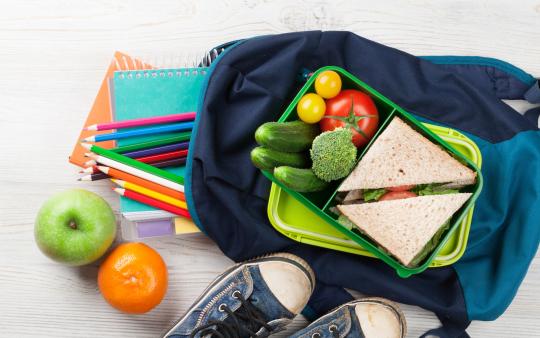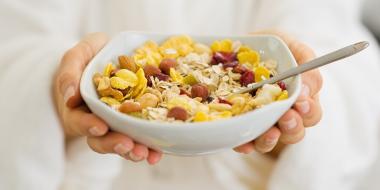I have yet to meet a parent who loves packing school lunches. It is one of those daunting things we have to think about as the start of the school year approaches.
In our family, we are inching our way towards a time when the kids can help out and pack their own lunches. We are using school lunch pack-out as a way to help them learn about healthy eating. Each year their school lunch responsibilities increase.
To get my kids thinking about what makes a healthy lunch, I categorized foods based on what they do in the body. I want to teach my kids to be mindful about how food affects how they think, feel, act, and function.
So this is how we pull together our lunches.
Energy Food
A steady supply of wholesome carbohydrates throughout the day will provide energy. A portion size is about the size of your child’s hand or fist. Include 2 portions of energy foods per lunch.
Good sources of energy foods
Grains and grain flour, dairy, starchy vegetables such as potatoes, beets, sweet potatoes, squash, legumes and pulses like beans, lentils, split peas.
Energy drinks don't count! They give you energy by stimulating your nervous system, not by nourishing your body.
Growth Food
These are foods high in protein. Protein helps the muscles, bones and skin stay healthy and strong and also helps the body produce chemicals like enzymes and hormones that keep all your systems running smoothly. A portion size is about the size of your child’s palm. Include 1 portion of growth food per lunch.
Good sources of growth foods
Eggs, fish, meat, dairy, legumes, and pulses.
NOTE: legumes, pulses and dairy contain significant carbohydrate and protein and can therefore count in both the Energy and Growth categories. If you are using them to cover both categories, increase the quantity.
Brain Foods
These are foods high in healthy fats. Healthy fats keep your brain and skin healthy and your immune system strong. Include healthy fat in the form of oil or food. Include 1-2 teaspoons of oil or 1/4 cup of high fat food.
Best brain foods
Avocado, olives, seeds, coconut, fatty fish, whole yogurt, or milk
Vegetables
Vegetables are important for their fibre, phytonutrients, vitamins, and minerals. Blend them into your main dish (like chili or spaghetti sauce, for example) or have them as a side snack. Include at least one type of vegetable in your lunch, but the more the better!
Vegetables for lunches
Carrot sticks, cherry tomatoes (though technically they’re fruit!), cucumber slices, toasted seaweed, celery sticks, kale chips
Fruit
Fruit contains phytonutrients, fibre, vitamins, and minerals important for growth. Fruit also contains carbohydrates which will give the body energy. A serving of fruit for a lunch is about the sized of your child’s hand or fist. Include 1-2 serving of fruit per lunch.
Fruit for lunches
Small cluster of grapes, apple slices, sliced oranges, dried apricot or fig, raisins, apple sauce, pear sauce
NOTE: Fruit juice, fruit strips, fruit gummies or any other refined fruit product is not the same as whole fruit. These contain more concentrated sugar and less fibre and nutrients than whole fruit.
Drink
Water is essential to the growing body and working brain. Be sure to bring a reusable water bottle to school and drink throughout the day. If they don’t like water, try putting cooled herbal tea (mixed berry, mint etc) in their water bottle. A child should be drinking about 1 1/2 liters of water throughout the day.
You might decide your child needs more than the portions outlined here, especially if they are very active or are staying for an after school program. Adjust your portions according to your child’s needs to be sure there is ample food available to them. In my family, we printed up a chart for the fridge which lists options for each category. That way we can plan our lunches and make sure they are nutritionally balanced while giving them some control over their meals. Finally, don't forget to check in with your child’s teacher to find out what foods need to be avoided in your class due to allergy and adjust accordingly.
Happy lunch packing!









